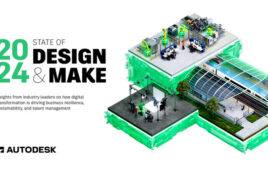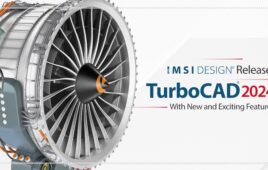|
|
At NI Week in Austin, TX, conference sponsor National Instruments announced LabView 8.5, the latest version of the graphical system-design platform for test, control and embedded system development. Building on nearly 10 years of investment in multithreading technology, LabView 8.5 significantly reduces the programming complexity often required with Multicore and FPGA architectures. With the parallel dataflow language of LabView, you can easily balance several measurement and control tasks between the multiple processor cores available on today’s standard PC platforms.
When we talked to attendees at the conference about LabView we were surprised at the loyalty and enthusiasm it engenders. For many, this software provides a tool for virtual prototyping a la Mechatronics. This inexpensive, easily learned software has long provided a graphical-design software system that allows you to design instrument and control packages without being an instrumentation specialist.
Multicore processing for speed: The big news in Version 8.5 is the way it works with Multicore computers. Today, major computer chipmakers are migrating up to Multicore as a way to continually boost operating speed. Even a fairly basic discount laptop today has a dual-core processor, and chipmakers like Intel are looking at four- and eight-core processors. LabView lets you take full advantage of this new processor capability by programming parallel operations with the software.
 |
|
LabView 8.5 unlocks the power of Multicoreprocessors. As computer chipmakers adopt Multicore processors to boost speed, Version 8.5 takes advantage of the new capabilities. |
“Engineers and scientists depend on continually improving PC processors, operating systems and bus technologies to drive increased performance in their machine control systems,” said Dr. James Truchard, National Instruments CEO and co-founder. “With the shift toward Multicore processors on the PC, LabView programmers benefit from a simplified graphical approach to multithreading, making it possible for them to maximize the performance of Multicore technology with little or no change to their code.”
Designers of industrial machines, robotics, Mechatronics systems and industrial control applications can see performance gains from Multicore technology. You can balance parallel tasks” such as control loops, measurements and industrial communication among multiple processing cores. Unlike sequential, text-based programming tools, the parallel dataflow language of LabView naturally divides tasks across multiple processors. As one user, Scott Sirrine, Lead Product Engineer at Eaton Corp. explained, “We use a straightforward multi-loop approach to harness the LabView multithreaded architecture. So now that there are multiple cores to process those loops, we can get more channels and more real-time data acquisition and analysis. There was no need to rewrite our application for the new Multicore processing platforms; NI did the work for us in the way they designed the software.
Improved Measurement, Control for Machine Builders: LabView 8.5 also adds enhanced vibration measurement and order analysis tools for industrial machine monitoring systems. For high channel-count systems, the new multivariable editor makes it easy to configure or edit hundreds of I/O tags using a simple spreadsheet interface.
LabView allows integration of more advanced programmable automation controller (PACs) with existing programmable logic controller (PLC)-based systems, adding high-speed measurements and advanced control to industrial systems. Version 8.5 adds enhancements for building PAC-based industrial systems, including a new library of OPC drivers that expands industrial connectivity, nearly doubling the number of compatible PLCs and industrial devices.
Real-Time and FPGA Systems for Performance and Reliability: For prototyping reliable industrial machines, LabView 8.5 extends the performance of Multicore applications to real-time embedded systems. You can manually assign portions of code to specific processor cores to fine-tune real-time systems or isolate time-critical sections of code on a dedicated core. The new NI Real-Time Execution Trace Toolkit 2.0 visually displays timing relationships between sections of code and the individual threads, as well as processing cores where the code is executing.
 |
|
LabView 8.5 delivers new NI OPC servers to provide connectivity with thousands ofindustrial devices such as programmable logic controllers (PLCs). |
The parallel nature of LabView also applies to FPGA-based systems. Version 8.5 adds multichannel filtering and PID control algorithms to cut the FPGA resources required for high-performance machine control systems. In addition, the new LabView FPGA Project Wizard automates I/O configuration, IP development and overall setup for common I/O, counter/timer and encoder applications.
New Statechart Module for Prototyping and Implementation: Statecharts are commonly used to model real-time and embedded systems to depict events and responses in machines. Version 8.5 adds a new Statechart module to help design and simulate these event-based systems using familiar, high-level Statechart notations based on the Unified Modeling Language (UML) standard. Because the Statechart Module is based on the LabView graphical programming language, you have a single platform to design systems quickly.
www.ni.com/labview85/machine.htm
Filed Under: ENGINEERING SOFTWARE, TEST & MEASUREMENT





Tell Us What You Think!